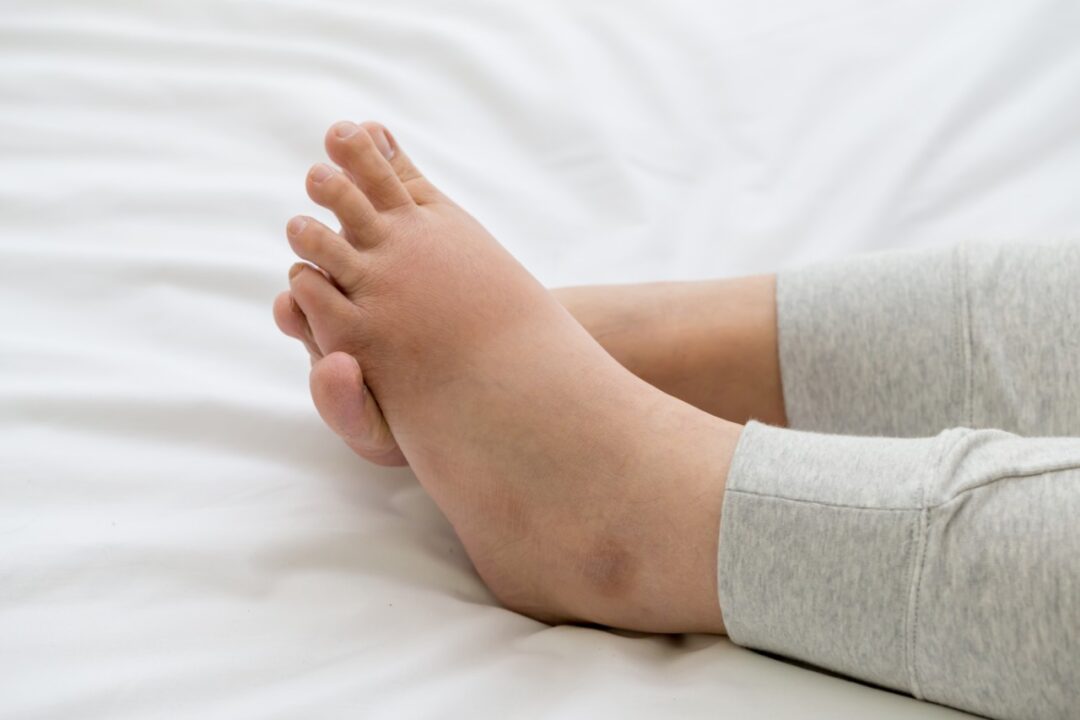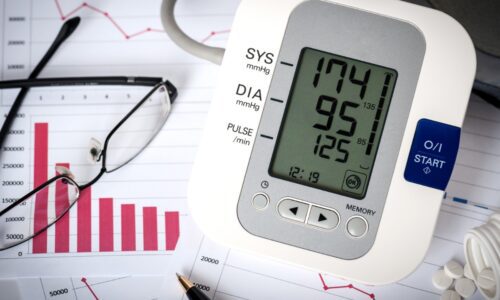Why do my legs swell? |

In my last health tip I described how blood is circulated around the body. I mentioned that poor circulation can cause leg swelling, and promised to provide a fuller review of this very common problem. I’d venture to say that almost 100% of adults have noticed puffiness or swelling in their legs at some point – so what is going on?
Probably the most common cause of leg swelling is compression of the large thigh veins that return blood to the heart. When we sit in a chair, our body weight presses on our veins, and the edge of the hard seat puts extra pressure on the back of our thighs. When the blood’s “pipes” are narrowed, pressure backs up the blood into the feet where gravity also contributes to its pooling. Under higher pressures, some of the water content of the blood leaks through the blood vessels into the nearby potential space between muscles and skin and into fatty tissue. This results in a swollen appearance of the legs.
Prolonged sitting (which occurs in long car trips or airplane flights) contributes to leg swelling, especially if you do not get up and walk around at regular intervals. Calf muscles help to milk venous blood back to the heart when they contract, so simple walking can make a big difference in improving swelling. Elevating the legs can reduce the effect of gravity, which also helps to reduce puffiness. If you’re stuck in a car or airplane (or any chair, frankly) for a long period of time, foot pumps are the best exercise (outside of walking) to get those calf muscles working. You can view the most effective leg exercises here. Although doctors have not yet determined the optimal frequency of leg exercises when you’re stuck in a chair, I’d say moving your legs every 30 minutes to an hour is a good idea. Leg swelling can be a sign that you’re at risk for blood clots [Arteries And Veins: What is The Difference?], and you definitely want to avoid those at all costs! If only one leg is swollen, that can be a sign that there is already a clot in a large leg vein, so you should see a doctor right away if this happens.
Most leg swelling is related to a mix of body position, inactivity, and gravity. However, anything that reduces pressure in the circulation can cause blood to pool in the legs. If the heart is not pumping strongly, for example, it can’t force the blood all the way around the system. Heart failure results in leg swelling as the blood pools in the farthest point from the heart muscle, and gravity contributes to keeping it there.
Interestingly, blood needs a certain amount of protein content to remain inside the blood vessels. I think of it kind of like the difference between trying to keep pudding on a fork versus milk on a fork. The pudding will probably stay put, despite the gaps, but the milk is too thin and falls right through. Our smallest blood vessels are intentionally leaky to allow transport of nutrients and oxygen through (they have walls like a fork – to use my analogy) but the walls will let water through too if the blood is too thin or pressure is too high. Conditions that reduce the protein content of blood (such as malnutrition or liver failure) can cause leg swelling. This is why physicians encourage protein supplements (such as Ensure milkshakes) in elderly or sick people who are not eating enough.
Kidneys filter the blood and remove part of its water content in urine (please see my previous health tip about how kidneys work). [Kidneys: What Do They Do and How Can You Keep Them Healthy?] If the kidneys are significantly damaged, they stop filtering the blood and it becomes swollen with extra fluid, which increases the pressure in capillary beds and water forces its way through the fork tines, causing swelling.
Inflammation (due to allergy, auto-immune reaction, or infection) can also cause swelling through a different mechanism. Certain cells responsible for allergy or infection responses produce chemicals (such as histamines) to attract white blood cells to the affected area. The chemicals trigger local blood vessels to become more leaky (like spreading apart the fork tines) to encourage transport of white cells through the blood vessel walls and into the nearby tissues.
When the area of inflammation is small (such as bug bite, or sinus infection), the local swelling doesn’t present much of a problem. However, when an infection that has gotten into your blood stream (often referred to as sepsis – the old fashioned term is “blood poisoning”), all the blood vessels in the body are exposed to the chemicals that tell them to become leaky, and they do so all at once. This results in a massive shift of the blood’s water content into the tissues, drops in blood pressure, and potential death. This is why doctors like to treat infections early on, because once sepsis sets in, it’s very hard to tighten up the fork tines and get fluids back where they belong before the patient becomes unconscious and needs mechanical ventilation. Any infection (such as pneumonia, cellulitis, diverticulitis, urinary tract infections, etc.) has the potential for spreading into the blood stream and causing sepsis (which also causes massive swelling often visible in the arms and legs and face) and is life-threatening.
The final main cause of leg swelling that I will mention is lymphedema. The lymph system provides back up to the circulatory system by suctioning extra blood plasma (that has leaked out of the capillaries) out of the tissues and returning it to the heart through little relay stations called “lymph nodes” and then dumping it into the neck veins. If this system is blocked or damaged (most commonly due to previous surgery or radiation treatments and sometimes tumors or blood cancer), the blood’s water remains outside the blood vessels and causes swelling.
In some countries outside the United States, parasites can cause blockage of the lymph system (the infection is known as filariasis, caused by 3 different species of tiny worms that can enter the body via a mosquito bite and multiply inside lymph nodes) which can result in massive leg swelling known as elephantiasis (in severe cases, human legs can look a lot like an elephant’s, hence the name!)
In summary, leg swelling is usually harmless and reversible (from venous compression) but can be a sign of something more serious (such as heart, kidney or liver failure, protein malnutrition, or advanced infection). Regular exercise, a nutritious diet, and maintaining a healthy body weight can all help to reduce the risk of blood clots from leg swelling.
In my next health tip, I’ll review the lymph system because, like the spleen [The Spleen: Least Useful Organ In The Human Body?], it’s quite mysterious to most people and yet – without a functioning lymph system you could almost literally turn into an elephant!
References
http://www.mayoclinic.org/symptoms/leg-swelling/basics/causes/sym-20050910
https://rarediseases.org/rare-diseases/elephantiasis/
If you have any more questions just Ask Hanna, our health advisors are here to help.
Image: ©Shutterstock / comzeal images








